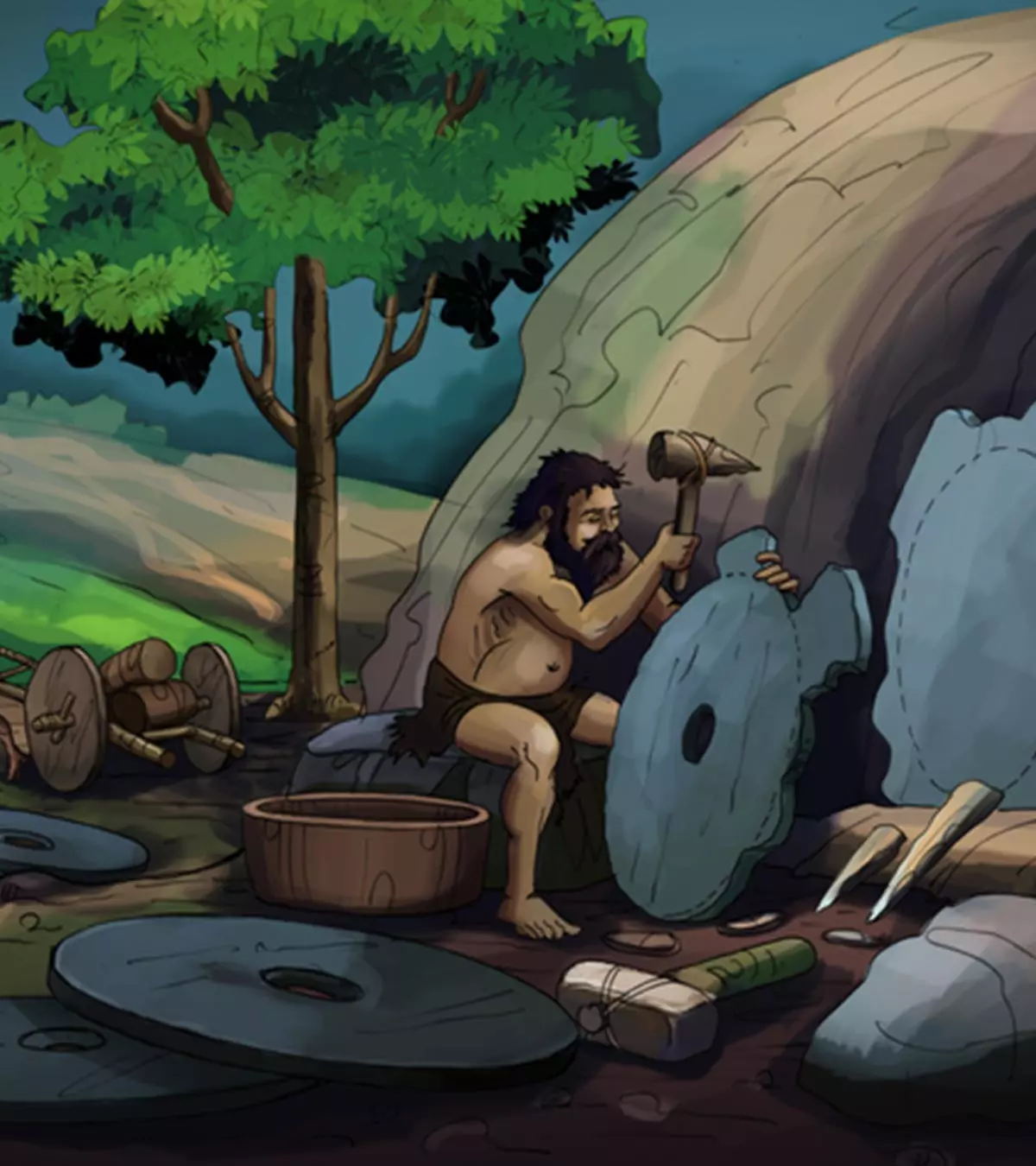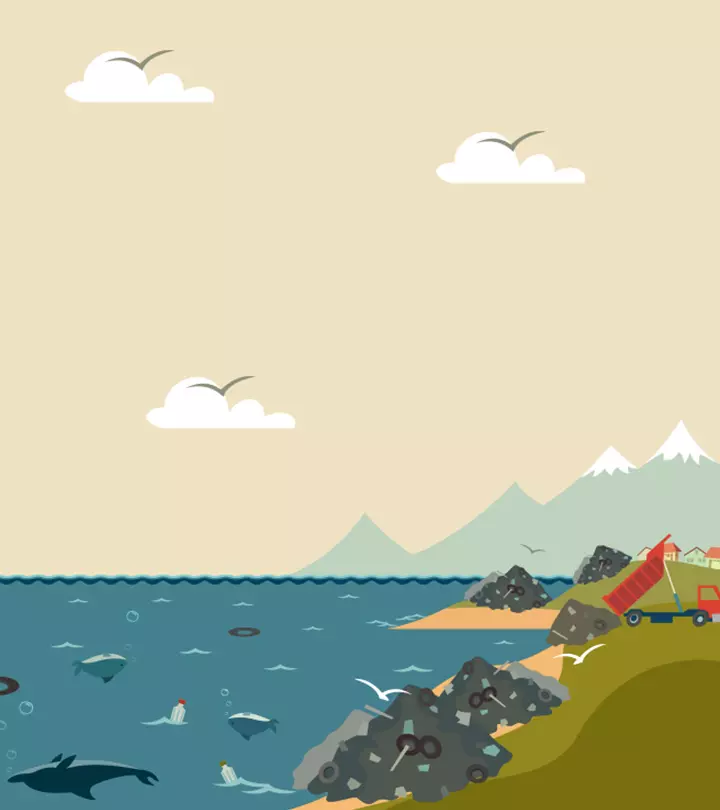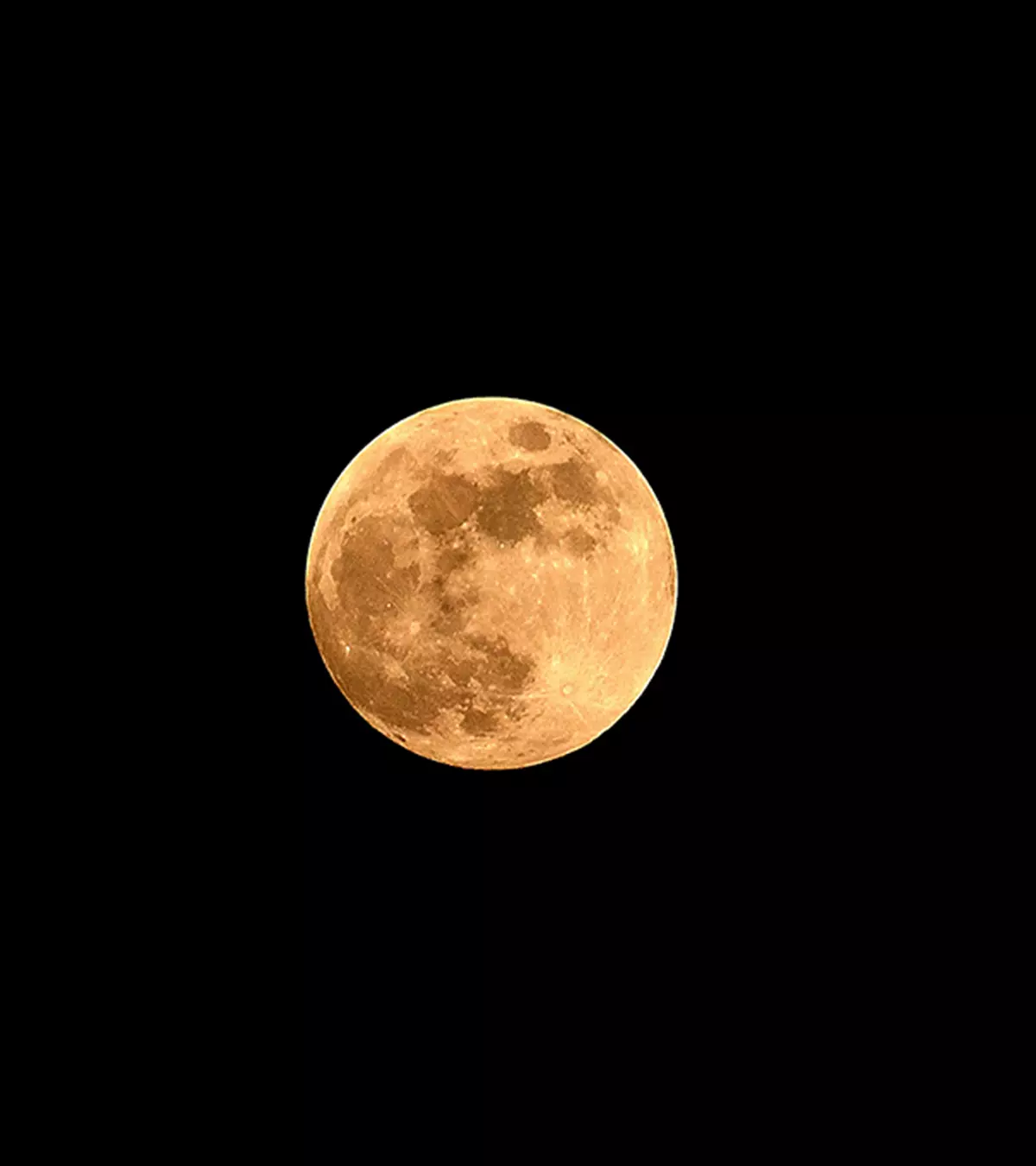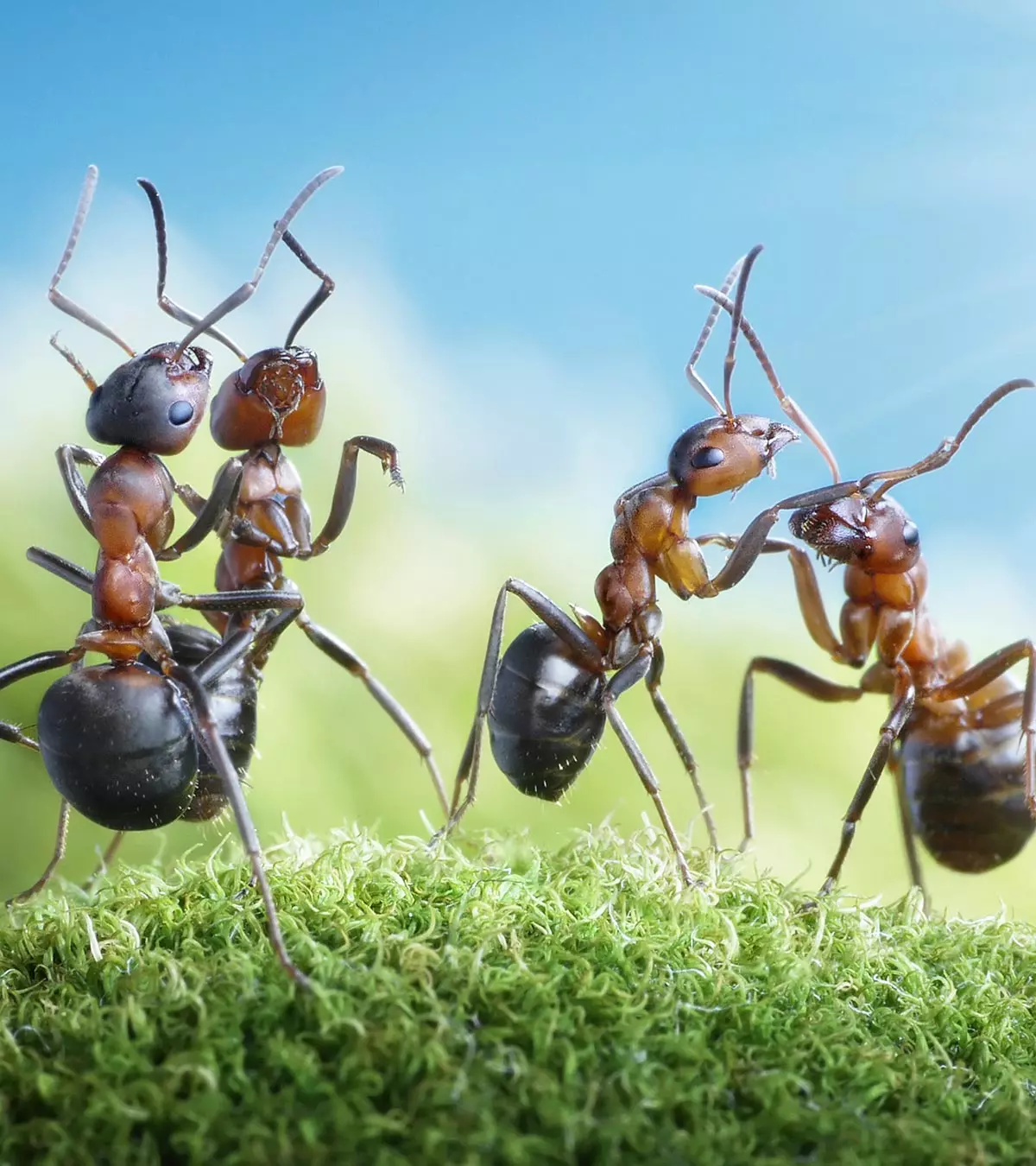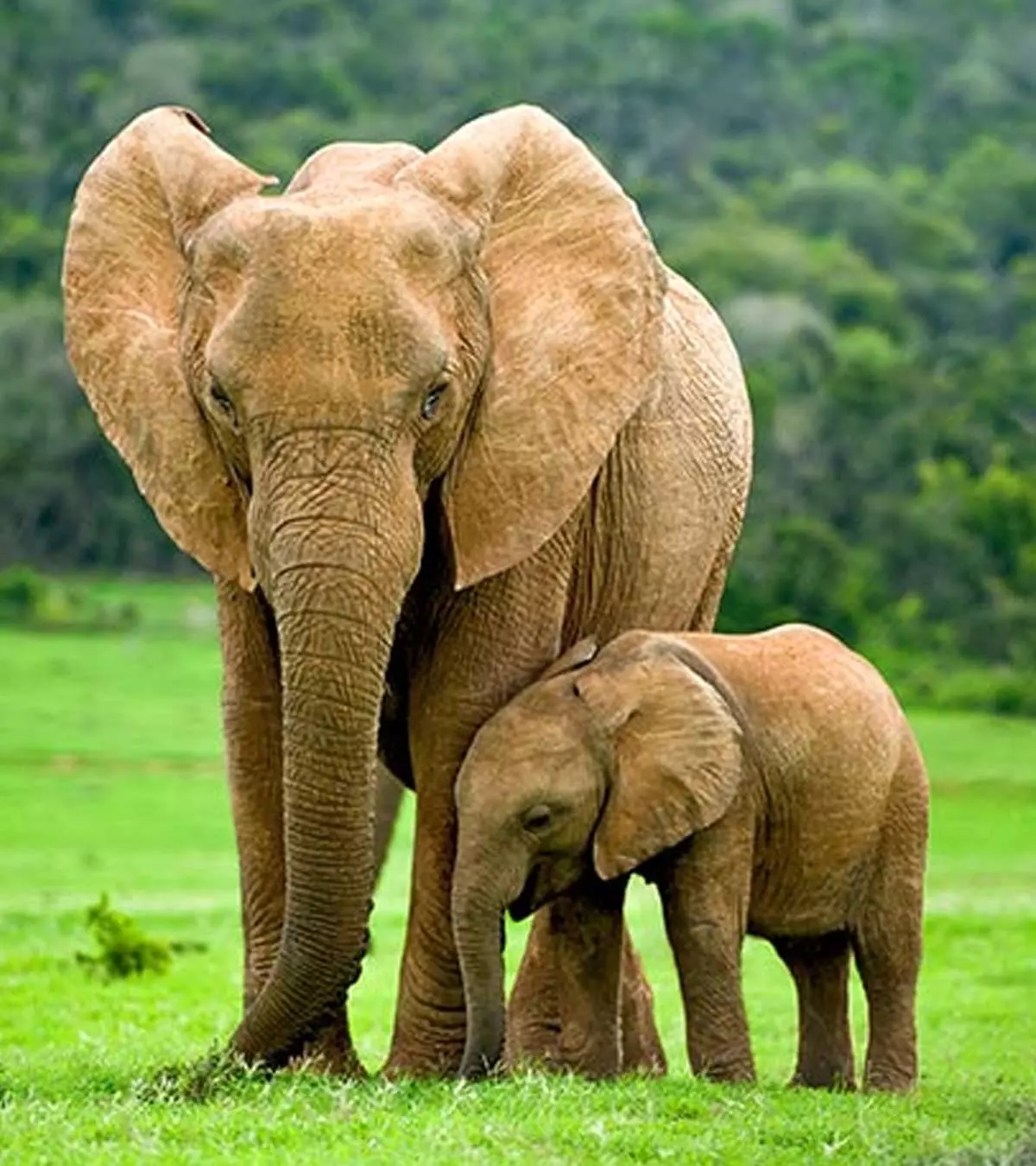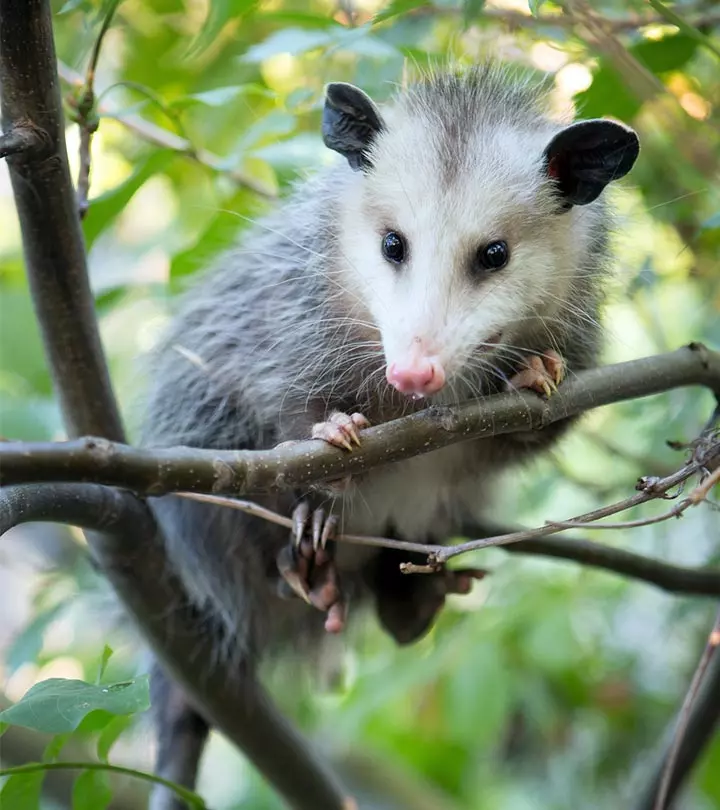
iStock
The opossums are cute wild animals found in North and South America.

They are nocturnal creatures with grayish-brown or white fur, large black ears, with pink noses. If you are looking for opossum facts for kids, this post is for you. These solitary animals usually live alone when not breeding actively. They are excellent swimmers and can climb trees and structures effortlessly. This post brings you some interesting facts about opossum to fulfill your children’s curiosity.
Key Pointers
- Opossums are a type of wild animal that can be found in North and South America.
- They belong to the infraclass of mammals known as Marsupialia and there are over 20 species of opossums.
- Opossums have a lifespan of approximately two years in the wild and up to four years in captivity.
- When faced with a predator, opossums have a unique defense mechanism where they play dead. They can remain in this state for several hours until the danger has passed.
- Opossums spend most of their time in trees and have a prehensile tail that can curl and allow them to suspend their body.
Quick Facts About Opossum
Scientific name: Didelphis virginiana (Virginia opossum), Didelphis marsupialis (Common opossum)
Size: 2.5ft (76cm) from head to tail
Weight: 8.8 to 13.2lb (4 to 6kg)
Lifespan: Two years in the wild; Can reach four years of age in captivity
IUCN conservation status: Least Concern
Name and Taxonomy
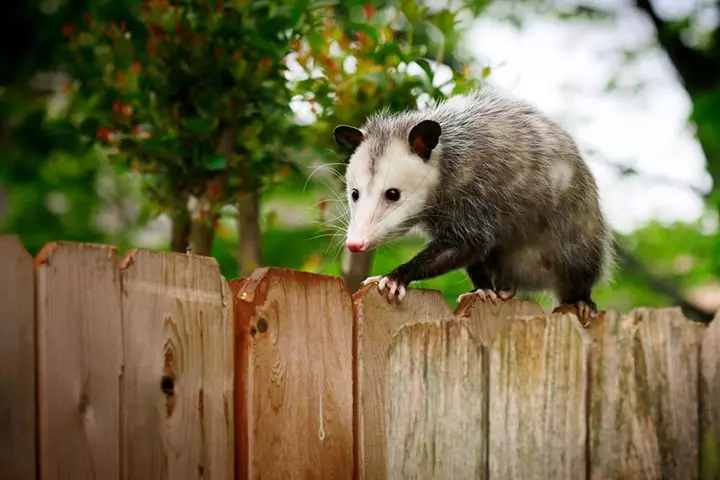
- Opossums belong to the ‘infraclass’ of mammals called Marsupialia. This means they have pouches to help raise their babies.
 Did you know?
Did you know?- Opossums belong to the same group as Kangaroos and Koalas, which have similar marsupial characteristics. Interestingly, Kangaroos and Koalas are only found in Australia – several miles away from the opossums’ home in the Americas.
- Opossums are usually called ‘Possums’ in North America. The term ‘possum’ also refers to some tree-living or arboreal marsupial species in Australia. However, these Australian animals are not the same as the North American opossum, which belongs to a separate biological order.
- There are more than 20 species of opossums. The most notable are the six species within the genus Didelphis.
- The most widely recognized opossum species (under genus Didelphis) are the Virginia opossum and the Common opossum. The Virginia opossum is predominantly found in east and south of North America. The common opossum is found in Central America and the northern South America.
Lifespan
- Opossums have a lifespan of just two years. A wild opossum may even live for only a year while opossums raised in captivity can live up to four years.
Appearance

- Opossums are almost the size of a domestic cat. Male opossums are slightly larger than females, but the difference is so little that the animal nearly has no sexual distinction.
- The average size of opossums, both males and females, is 2.5ft (76cm) from head to tail. Average weight is 8.8 to 13.2lb (4 to 6kg).
- Opossums have 50 teeth. Males tend to have larger canines compared to females.
- The animal has an opposable thumb on both their front and hind feet. The thumb makes grasping tree branches and food easy for the animal.
 Quick fact
Quick factHabits and Lifestyle

- Opossums are well-known for their trick of playing dead. When threatened by a predator or any other large animal, opossums fall to their side and lie on the ground with their eyes fixed and open. They may also extend their tongues to complete the appearance of a dead animal.
- An opossum will play dead for as long the threat persists. Sometimes an opossum may play dead for hours to evade a predator.
- The animal’s brain automatically sends the body into a comatose state as a reaction to stress. This means opossums have nearly no control over when they choose to play dead, as it is an automated response to a stressful situation.
- Young opossums are not good at playing dead and hence will mostly hiss and growl when confronted by a predator.
- The anal glands (glands close to the anus) of an opossum secrete a foul-smelling substance when the animal plays dead. It helps reinforce that the animal is dead.
- An opossum is an adaptable arboreal animal that typically spends most of the time in the trees when in the wild. Opossums close to urban areas may spend substantial time on the ground due to the availability of scraps and other discarded food on the ground.
- Opossums have a prehensile tail, which can curl around a small branch and let the animal suspend its body. Opossums do not sleep while hanging from their tail and instead use the tail as an extra hand to grip objects.
- An opossum uses its tongue to clean and groom its fur just like a cat does. Letting saliva on their fur also helps them cool down during the warmer season.
- Opossums are nocturnal animals and hunt during the night. Their large pupils help them see better in the dark.
- Opossums are resistant to the rabies virus, and it is very rare to find an opossum affected by rabies. The low body temperature makes it difficult for the virus to multiply, thus protecting the animal from the disease.
- Opossums are immune to the venom of the snakes that are endemic to the same habitat as the opossum (2).
Reproduction
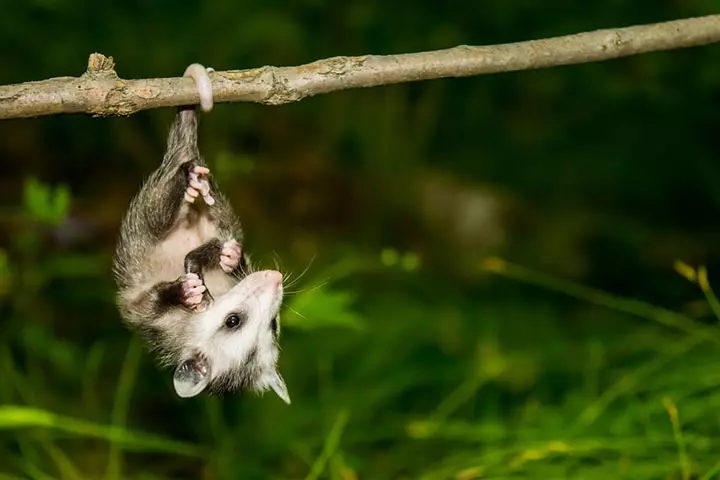
- Opossums usually give birth to 20 babies in a litter. However, the survival rate of the litter is often less than 50%.
- Opossum infants are tiny: no bigger than a honey bee. The babies crawl through the mother’s fur and into the pouch-like structure on her belly. They feed on breast milk through the nipples inside the pouch and grow.
- The female only has 13 teats inside the pouch. So only the first 13 who reach the pouch survive while the others perish. It explains the low survival rate of the litter.
- Common opossums have fewer babies per litter when compared to Virginia opossums. Both species have one to three litters per year.
- Baby opossums are also called joeys, like the offspring of a Kangaroo and Koala.
- Female opossums are often spotted with their babies on their back. There could be as many as ten babies on a female opossum’s back.

- Baby opossums feed on milk for nearly three months after which they spend most of the time outside the pouch. They begin eating from what their mother eats. Once they can forage food independently, they leave to explore new areas.
 Quick fact
Quick factDiet
- Opossums are omnivores, which means they eat both plants and animals.
- The staple food for an opossum in the wild consists of small rodents, insects, snails, slugs, eggs, frogs, fruits, and vegetables.
- Opossums that live in captivity can survive on dog or cat food. Since opossums are omnivores, just like humans, it is quite common to see captive opossums eat the same food that their human caretakers eat.
- An opossum can hunt snakes, even the poisonous ones, for food!
- Opossums are opportunistic eaters. It makes them excellent scavengers. An opossum will devour a carcass if it finds one! However, their ability to scavenge makes them an essential part of the ecosystem.
Habitat and Endangerment
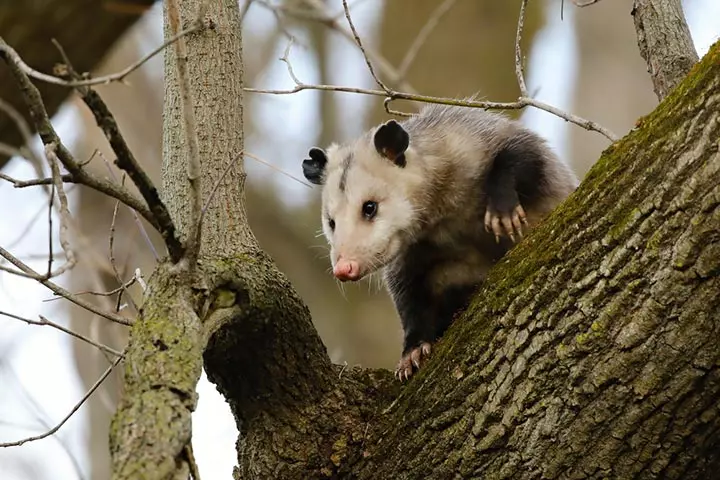
- Opossums usually prefer areas that are wet and have a moderate temperature.
- Opossums often enter human settlements and feed on garbage. Some consider opossums a pest for this behavior. However, these animals also eat rodents and other animals that humans consider as pests, which is why they are often left alone.
- Opossums often make nests within tree holes. They may also use nests left behind by birds or dens left vacant by other animals including other opossums. A female opossum will line the nest with grass and leaves when she is about to give birth or already has a litter of babies.
- Opossums often move from one area to another in search of food. They may live for an extended duration in an area that provides abundant food and move further once the food is depleted.
- Opossums are the only marsupial animal found in the United States.
- Opossum population is rated ‘Least Concern’ by the International Union for Conservation of Nature (IUCN), indicating that the animal has a healthy, sustainable population.
Opossum in society & culture
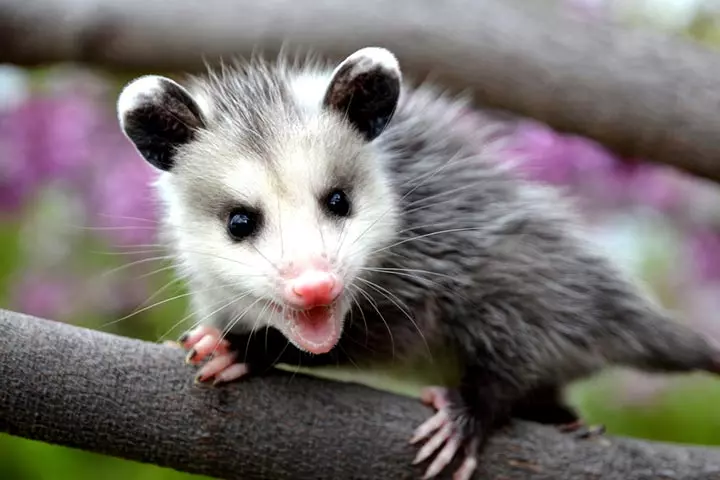
- ‘Playing possum’ is a phrase given to anyone playing dead. It is often used to refer to the behavior of other animals’ that also play dead. The phrase even refers to situations where one does not wish to speak to someone and hence ignores them or pretends to be asleep, in other words ‘play possum.’
- In the animated film Over The Hedge, an opossum distracts a human by playing dead while his animal friends steal food from the human’s car.
- Opossums are known to voraciously feed on ticks, an insect that spreads Lyme disease among human beings. A healthy population of opossums in an area may reduce the spread of Lyme disease in the vicinity (4).
- Hunting opossums for pelt and meat was once a common practice in the United States. Opossums are still hunted for food in the southern United States.
- Despite several interactions with humans, opossums seldom attack humans, and there is rarely ever any human-opossum conflict. But when cornered, an opossum can bite with its sharp teeth (all 50 of them!).
- Opossums are wild animals and cannot be domesticated despite their ability to live close to humans and share the same natural resources.
Opossums do not usually get aggressive when they encounter humans. They also do not carry or transmit diseases to humans, which makes it safer to be near them. However, there may still be cases, although few, when humans cause harm to the animal for no reason or run over it with their vehicles in urban areas.
Frequently Asked Questions
1. Where do opossums go during the day?
Opossums are usually active during the night (nocturnal) and sleep during the day. They do so under bush piles, hollow tree trunks, and burrows. They may also be found in attics and on the grounds of abandoned buildings.
2. How fast can an opossum run?
Opossums may attain a speed of four miles per hour while running (5).
3. Why do opossums only live two years?
Besides naturally having a short life span, various other reasons may cause opossums to die early. They are:
- Presence of predators, including dogs, coyotes, and birds of prey
- High parasite infestation
- They are prone to be affected by cold weather
- May get run over by vehicles
4. What is an opossum afraid of?
Opossums are afraid of animals like hawks, dogs, owls, coyotes, bobcats, and foxes; besides that, they try to avoid contact with humans as well (3).
5. Are opossums good to have around?
Opossums are very good for our environment since they are a natural part of their ecosystem. However, they carry many serious diseases and parasites that can affect humans. Avoid direct contact with opossums since they are wild animals (6).
6. How to deal with Opossum?
To keep opossums from making a home under your deck or patio, it’s essential to block any entry points that they might use. If you think a mother opossum has already moved in, wait until she leaves her den and then cover the opening with a net or straw. This way, if there are any opossums inside, they can find their way out, but others won’t be able to get in. Opossum moms typically carry their babies with them, so there’s usually no worry about leaving any little ones behind. However, before sealing the opening, it’s always a good idea to check for youngsters. If the hole stays undisturbed for a couple of nights, you can safely assume it’s empty and go ahead and fill it up (7).
There are many fascinating and fantastic opossum facts for kids to share that will pique your child’s interest in these adorable little wild animals. They are nature’s own cleaners owing to their excellent scavenging abilities. Therefore, you must educate your children about them. You can include some fascinating facts about their name and taxonomy, lifespan, characteristics, habitat and lifestyle, breeding, diet, the causes of their endangerment, and how they prosper in human society and culture. Opossums are a significant part of the ecosystem and must be safeguarded from extinction.
Opossums are nocturnal animals that look like rats. They are known for their swimming abilities and are swift tree climbers. So next time your children spot one in the garden or on the TV, share the interesting facts about opossums in the infographic below to enhance their knowledge and pique their curiosity.
Some thing wrong with infographic shortcode. please verify shortcode syntaxIllustration: Interesting Opossum Facts For Kids
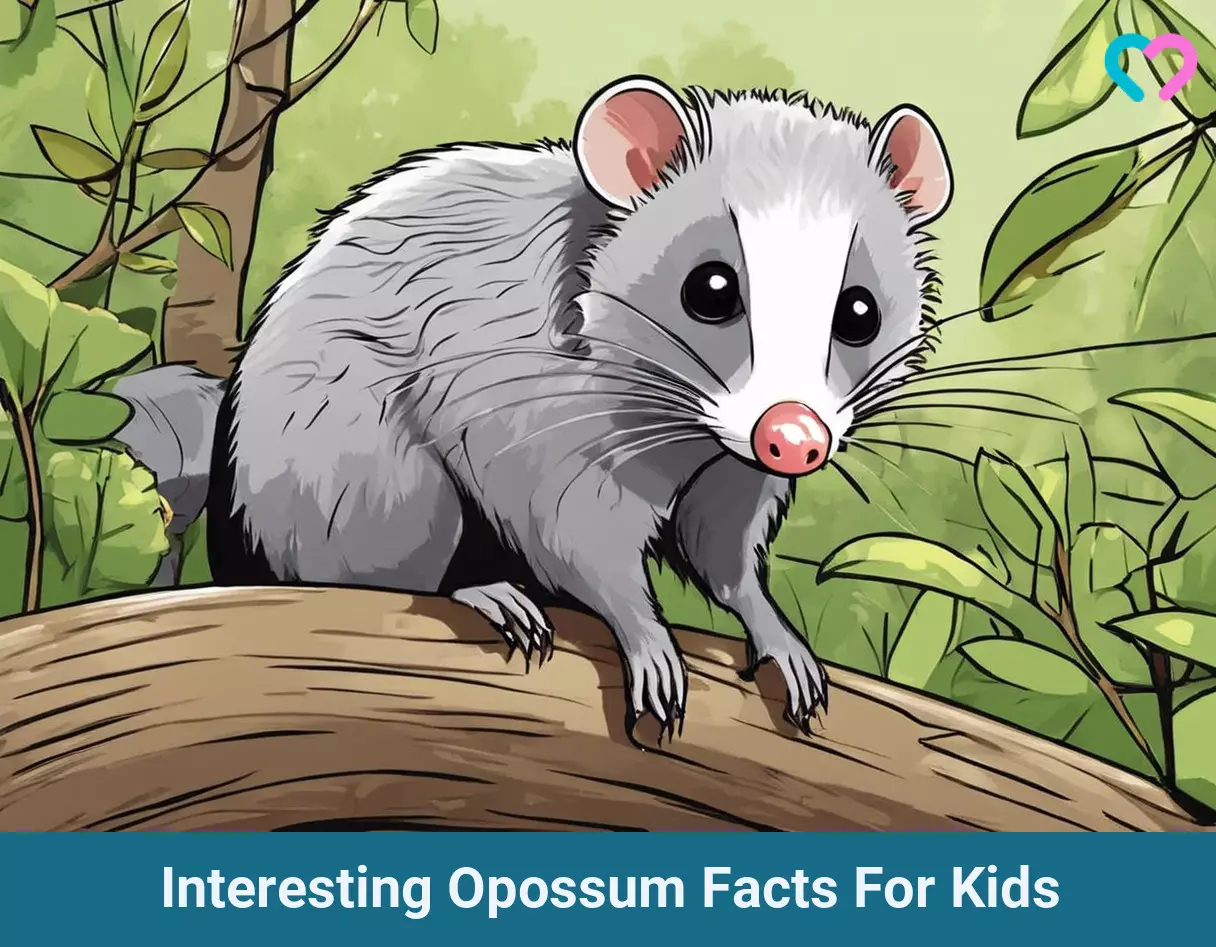
Image: Stable Diffusion/MomJunction Design Team
Opossums are interesting animals with many intriguing traits which make them attractive to children. Discover amazing facts about opossums! Learn about their unique adaptations, diet, and behavior in this fun and informative video.
References
- Opossums
https://icwdm.org/species/other-mammals/opossums/ - C F Komives et al.; Opossum peptide that can neutralize rattlesnake venom is expressed in Escherichia coli; Biotechnol Prog (2017)
https://www.ncbi.nlm.nih.gov/pmc/articles/PMC5315628/ - Virginia Opossum
https://portal.ct.gov/deep/wildlife/fact-sheets/opossum - Why you should brake for opossums; Cary Institute of Ecosystem Studies
https://www.caryinstitute.org/news-insights/podcast/why-you-should-brake-opossums - Opossums (Didelphis virginianus); Washington Department of Fish and Wildlife
https://wdfw.wa.gov/species-habitats/species/didelphis-virginianus#:~:text=With%20a%20top%20speed%20of - Managing Opossum Problems
https://www.eldoradocounty.ca.gov/Land-Use/Department-of-Agriculture-Weights-and-Measures - What to do about opossums
https://www.humaneworld.org/resources/what-do-about-opossums
Community Experiences
Join the conversation and become a part of our nurturing community! Share your stories, experiences, and insights to connect with fellow parents.
Read full bio of Dr Rebbecca Wilcox
Read full bio of Sravani Rebbapragada
Read full bio of Harshita Makvana
Read full bio of Praggya Joshi









